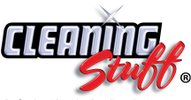Restaurant Cleaning & Sanitation Best Practices
20th May 2024
Maintaining a spotless and sanitary environment in the bustling restaurant industry is about more than making a good impression—it's crucial for operating a successful business. The cleanliness of your establishment directly impacts customer satisfaction, health standards, and, ultimately, your bottom line. Today, let's uncover some restaurant cleaning and sanitation best practices you should follow.
Back-of-the-House Cleaning and Sanitation
The hub of your restaurant, the back of the house, requires meticulous attention. Start by developing a daily checklist that covers the following areas:
- • Kitchen: Ensure floors, countertops, and cooking surfaces are free from grease and food debris. You should use disinfectant solutions regularly on surfaces that come into contact with food.
- • Storage: Check your storage areas for signs of pests, and organize supplies in a manner that prevents contamination.
- • Prep areas: Sanitize prep stations before and after each use to prevent cross contamination.
Kitchen-Equipment and Food-Contact-Surface Practices
Keeping your kitchen equipment and the surfaces that touch food clean is vital to stopping harmful pathogens in their tracks. Use commercial-grade sanitizers, designed for food service applications, and follow the manufacturer's instructions to achieve the best results. Pay extra attention to items and areas you use all the time, ensuring you sanitize them well between each use.
Also, don't overlook the importance of good garbage bags. Pick high-quality, commercial garbage bags that won't leak, minimizing the chance of contamination. This smart choice keeps your kitchen safe and up to the highest cleanliness standards.
Front-of-the-House Cleanliness Best Practices
Front-of-the-house areas, including dining spaces, restrooms, and entryways, form your restaurant’s face. Daily tasks should include:
- • Dining area: Regularly clean tables, chairs, and surfaces. Sweep and mop the floors with an appropriate cleaner.
- • Restrooms: Clean and disinfect several times a day, and check the stock of personal hygiene supplies.
- • Entryways: Ensure a welcoming, clean entrance by keeping door handles, windows, and floors pristine.
The Role of Staff Training in Maintaining High Standards
Training your staff is key to keeping your place sparkling clean and safe. These sessions teach everyone how to wash their hands, reminding them how cleanliness can help prevent germs from spreading. They'll also find out how to use cleaning and sanitizing products correctly, which is super important for keeping things hygienic.
Plus, they'll learn all about cross-contamination and how to avoid it. With this all-around training, your team will be experts at maintaining top-notch cleanliness and safety standards.
Fostering a Culture of Cleanliness and Accountability
Creating a culture that prioritizes cleanliness requires leadership by example. Encourage open communication about sanitation practices and provide feedback. Recognize and reward team members who consistently adhere to cleaning protocols, fostering a sense of pride and accountability in maintaining the restaurant’s standards.
By integrating these restaurant cleaning and sanitation best practices into your daily operations, you set a standard of excellence that resonates with every guest who walks through your doors. Everyone’s efforts can ensure memorable dining experiences.

